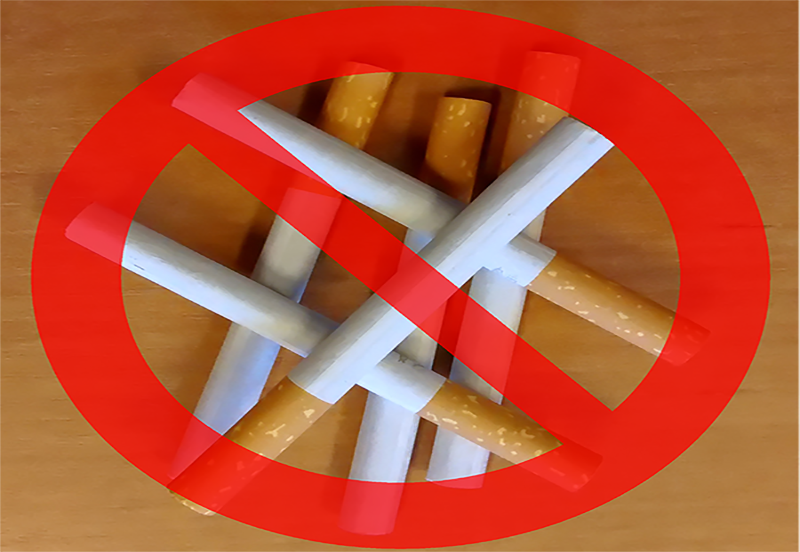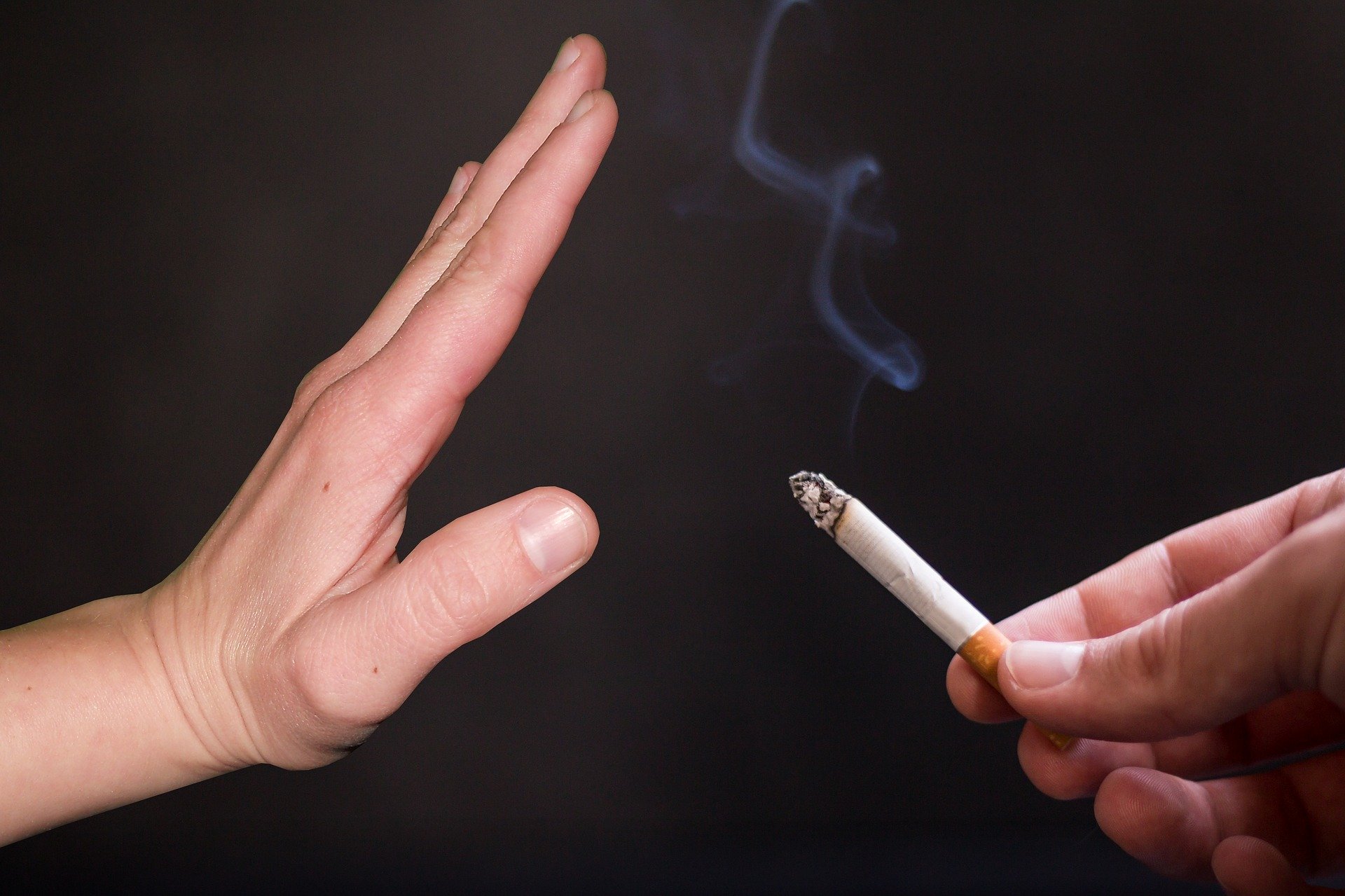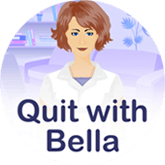Now is the time to give up smoking and protect yourself and your family. For Help to quit for good contact the Slough Stop Smoking team:
• By telephone on 0800 0614734 / 01753 373646
• By texting QUIT to 66777
• Using the Quit with Bella app www.QuitWithBella.co.uk
• By completing our online referral form by clicking here.
Just imagine your future without cigarettes – feeling great and having that extra money in your pocket. Stopping smoking can make a drastic improvement to your lifestyle and health in ways you might not expect. Once you stop smoking, you’ll experience immediate benefits as well as long-term improvements to your overall health.

- Smoking and Pregnancy
- Smoking and COPD
- Smoking and Diabetes
- Smoking and Heart Disease
- Stop before the Op
 Stopping smoking will benefit both you and your baby immediately. Harmful gases like carbon monoxide and other damaging chemicals will clear from your body. When you stop smoking:
Stopping smoking will benefit both you and your baby immediately. Harmful gases like carbon monoxide and other damaging chemicals will clear from your body. When you stop smoking:
- You will have less morning sickness and fewer complications in pregnancy.
- You are more likely to have a healthier pregnancy and a healthier baby.
- You will reduce the risk of stillbirth.
- You will cope better with the birth.
- Your baby is less likely to be born too early and have to face the additional breathing, feeding and health
problems that often go with being premature. - Your baby is less likely to be born underweight: babies of women who smoke are, on average, 200g (about 8oz) lighter than other babies, which can cause problems during and after labour, for example they are more likely to have a problem keeping warm and are more prone to infection.
- You will reduce the risk of cot death, also called sudden infant death (find out about reducing the risk of cot death).
Stopping smoking will also benefit your baby later in life. Children whose parents smoke are more likely to suffer from asthma and other more serious
illnesses that may need hospital treatment.
The sooner you stop smoking, the better. But even if you stop in the last few weeks of your pregnancy this will benefit you and your baby.
If your partner or anyone else who lives with you smokes, their smoke can affect you and the baby both before and after birth. You may also find it
more difficult to stop if someone around you smokes.
Second-hand smoke can also reduce birthweight and increase the risk of cot death. Babies whose parents smoke are more likely to be admitted to hospital for bronchitis and pneumonia during the first year of life. More than 17,000 children under the age of five are admitted to hospital every year because of the effects of second-hand smoke.
Smoking is the main cause of Chronic Obstructive Pulmonary Disease (COPD). COPD is the name for a collection of lung diseases including chronic bronchitis, emphysema and chronic obstructive airways disease.
At least 4 out of 5 people who develop the disease are, or have been, smokers. The lining of the airways becomes inflamed and permanently damaged by smoking. This damage cannot be reversed. Around 10-25% of smokers develop COPD.
COPD is largely a preventable condition. You can significantly reduce your chances of developing it if you avoid smoking.
If you already smoke, stopping can help prevent further damage to your lungs before it starts to cause troublesome symptoms.
If you’ve been diagnosed with diabetes, you will need to pay special attention to certain aspects of your lifestyle and health.
Diabetes doesn’t have to stop you from leading the life you want. Nor does it mean you’ll necessarily have other serious health problems in the future. If you do smoke, find support to help you stop. Smoking increases your risk of heart disease and stroke even further.
Smoking is now proven to be an independent risk factor for diabetes, and amongst diabetics it increases the risk of complications.
Diabetes complications already include heart disease, stroke and circulation problems. Smoking adds to the risk of developing all of these things. In some cases, smoking can double the likelihood of these conditions, as well as doubling the chances of suffering from kidney problems and erectile dysfunction.
For type 2 diabetics, the major cause of death is cardiovascular disease.
Coronary heart disease (CHD) is usually caused by a build-up of fatty deposits on the walls of the arteries around the heart (coronary arteries).
The fatty deposits, called atheroma, are made up of cholesterol and other waste substances.
The build-up of atheroma on the walls of the coronary arteries makes the arteries narrower and restricts the flow of blood to the heart. This process is called atherosclerosis. Your risk of developing atherosclerosis is significantly increased if you smoke.
Stopping smoking is the single best thing you can do for your heart health, and the good news is that the risk to your heart health decreases significantly soon after you stop.
Stop before the Op
One of the most important things you can do to speed up your recovery is to quit smoking. You may be having surgery in the coming months and now is the time to be thinking about stopping smoking before your operation.
Within the first hour, your blood pressure and pulse will return to normal. After eight hours the level of carbon monoxide in your blood will half and your oxygen levels will return to normal. After 24 hours the carbon monoxide leaves your body and within 48hrs your body is nicotine free. After just a few weeks you will start to notice your food tastes better, your lungs are clearer and you have more energy. Within 12 weeks your circulation is now improved throughout your body.
How long before the Op should you stop?
The sooner you stop before the op the better. Research suggests that stopping one month before surgery can make a great difference to the speed you recover and get back to good health. Ideally you should aim to stop smoking eight weeks before your surgery as this greatly reduces the risk of you developing complications. Smokers have one in three risk of developing post-operative chest infection. This can be reduced to one in ten if you stop eight weeks before your operation. We appreciate it is not always possible to give up in advance of your op especially for those undergoing emergency surgery, however giving up smoking for just a few days can make a big difference to your recovery as carbon monoxide and nicotine are cleared from your body within 48 hours.
Benefits of giving up smoking pre-op
Smokers normally require more anaesthetic than normal. Stopping before your surgery will mean you will require less anaesthetic and this will help speed up your recovery.
Less time spent in the recovery room and less need for oxygen therapy.
There is less likelihood of you developing a chest infection following surgery.
Wounds will heal more quickly. Smoker’s wounds take longer to heal due to the reduced amount of oxygen circulating in the blood and the effect of nicotine on the production of essential healing chemicals.
There is a lower risk of developing dangerous blood clots after surgery.
Less need for pain relief
What Happens To Your Body When You Quit Smoking?

How Much Do You Spend on Smoking?
There are a range of ways you can quit smoking, and we know that not everyone will quit smoking in the same way. That’s why we offer a range of options; you can get face-to-face stop smoking support and speak to one of our advisors, speak to our stop-smoking team over the phone, or even do it alone but with the support of the occasional email and use of stop-smoking apps. However you choose to stop smoking, we’ll be here to support you. You can find out more about our ways to stop smoking below.

Face-to-Face Quit Smoking Support
Maybe you’ve tried to quit smoking before and it didn’t work out, or there are things in your life that are making it difficult for you to stop. We offer face-to-face support so we can get to know you and your smoking habit better and therefore help you quit smoking for good!
You can make an appointment now by completing our online appointment booking form.


Quitline Support
Our team of trained stop smoking advisors are here to support to you with free expert advice and guidance on quitting smoking. They are able to offer advice on the best stop smoking aids or medications available to you, develop a quit plan and help you with any problems you are facing.
Calls can be arranged at a time which is convenient for you.
You can book an appointment to speak to a stop smoking advisor now.
I Want to Quit Smoking By Myself
If you are quitting smoking without advisor support, you will want to make sure you are giving yourself the best possible chance of success.
We can send you information as well as hints and tips to help you quit smoking.
You can fill the referal form here.



Quit With Bella
Bella is an Artificial Intelligent app you can download from the App Store and Google Play so you can get the expert support you need to quit smoking for good. Bella is your personal stop smoking coach that has been trained by expert advisors who have helped thousands of people quit smoking. Bella runs on the industry evidence base so you know you are getting help you can trust. Bella will be there for you all the time, whenever you need her, 1am after a difficult day and you want someone to talk to? Need extra motivation during the day? Don’t know how to get started and want some expert guidance? Bella is fully trained to be there with you in these moments.
To quit with Bella is really easy.
Download the app and start talking to Bella. Talk to her in a completely natural way. Advanced artificial intelligence allows for you to have a fluid and human like conversation with Bella.
Answer the questions and talk honestly with Bella. She will use her knowledge to provide you with personalised support. Bella remembers your situations as you describe them to her, so you always get a personalised service.
You can also talk to Bella by pressing and holding the microphone, as well as hearing her talk by pressing and holding a message.
Technology has advanced, and we should now feel the benefits of our progress. Quit with Bella today, and start your journey to becoming smoke free for life!
What Treatments Are Available to Help Me Stop Smoking?
There are a range of treatments available to help you quit smoking. Find out more about these by selecting the treatment tabs below.
Gum
Gum is available in two strengths: 2mg and 4mg. The 4mg gum is most appropriate for smokers who smoke more than 20 cigarettes a day, or who are strongly addicted to nicotine.
When you use nicotine gum, the nicotine is absorbed through the lining of your mouth. When you first stop smoking you should be chewing about 1 piece of gum every hour. To release the nicotine from the gum, chew until the taste becomes strong or hot. After this you can rest the gum inside your cheek. Once the taste or heat fades you will need to chew again to release more nicotine. Discard the gum after about an hour.
Gradually you can begin to cut down on the amount of gum you use. Try chewing for shorter periods, using smaller pieces, a lower dose or alternating with a non-nicotine gum.
Is gum right for me?
Gum can be helpful because it provides short bursts of nicotine. However, some people can find the taste unpleasant or dislike having to ‘park’ the gum in their mouth.
Patches
Nicotine patches work by releasing nicotine directly into the bloodstream through the skin.
How to use patches
There are two ways to use patches: just during the time you are awake (16 hour patch) or both day and night (24 hour patch). The 24 hour patch may cause some sleep disturbance but is helpful for people who have strong cravings during the early morning.
Patches also come in different strengths. Whichever strength you start on you should aim to gradually reduce the strength over time before stopping the usage of patches completely.
Who should use patches?
Patches are useful for those who are concerned about discretion (they can be worn easily beneath clothing) or dislike the taste of the oral products. They release a steady amount of nicotine. They may also cause skin irritation for some people.
Lozenges
Lozenges are placed in the mouth and dissolve slowly to release the nicotine and take about 20-30 minutes to dissolve.
How to use lozenges
Nicotine lozenges work in a similar way to nicotine gum. To release the nicotine from the lozenge, suck until the taste becomes strong or hot. After this you can rest the lozenge inside your cheek – once the taste fades you will need to suck again to release more nicotine. Suck until the lozenge has completely dissolved – each one should last 20 to 30 minutes.
You should use lozenges for about twelve weeks. For the first six weeks you should have one lozenge every one to two hours. You should then reduce your intake to one lozenge every two to four hours, finally reducing to once every four to eight hours in the last two weeks of treatment.
Who should use lozenges?
Lozenges are helpful because they provide short bursts of nicotine. Lozenges should not be used by people with mouth ulcers.
These are small tablets containing nicotine which dissolve quickly under your tongue.
Microtabs
Microtabs are designed to be dissolved under the tongue. Make sure you don’t chew or swallow them – this may cause unwanted side effects.
How to use microtabs
You should use one or two tablets every hour for up to three months after you stop smoking. You should then be able to gradually cut back your consumption. Once you are taking one or two tablets a day you should be able to stop completely.
Who should use microtabs?
Microtabs can also be used by those who are trying to reduce the number of cigarettes they smoke, as well as those who have quit completely. You should stop smoking within 6 months of using microtabs.
Inhalators
Inhalators look like a plastic cigarette. The inhalator releases nicotine vapour which gets absorbed through your mouth and throat. If you miss the ‘hand to mouth’ aspect of smoking, these may suit you.
How to use inhalators
A nicotine inhalator works by releasing nicotine vapour when you suck on it. Inhalators work very quickly so you should reach for your inhalator whenever you feel strong cravings for a cigarette. Each inhalator contains a disposable cartridge which has enough nicotine for around 3 to 4, 20 minute puffing sessions. This equates to around 400 puffs.
You should use the inhalator for a total of twelve weeks. Use between six and twelve cartridges per day for the first eight weeks depending on how many cigarettes you smoke. For the following two weeks reduce this by half, finally stopping the use of the inhalator completely in the last two weeks of treatment.
Who should use inhalators?
The advantages of inhalators are that they work much more quickly than gum or lozenges. They can be therefore used directly when you experience cravings for a cigarette. They also feel very similar (because of the motion involved in using them) to a cigarette so become a good replacement – especially for those who miss the ‘hand to mouth’ aspect of smoking.
Nasal Spray
The spray delivers a swift and effective dose of nicotine through the lining of your nose.
How to use nasal spray
You use the nasal spray by releasing one spray into each nostril twice an hour. It should be used no more than five times an hour and no more than forty doses a day. Each dose will give the equivalent nicotine contained in one cigarette. This is the fastest way that nicotine can enter the bloodstream reaching the brain within 10 minutes.
You should use the nasal spray for a total of twelve weeks. Use between one and two doses per hour for the first eight weeks depending on how many cigarettes you smoke. For the following two weeks reduce this by half, finally stopping the use of the nasal spray completely in the last two weeks of treatment.
Who should use nasal spray?
The advantages of nasal sprays are that they work much more quickly than gum or lozenges. They can therefore be used directly when you experience cravings for a cigarette – and most closely mimic the rush you get from smoking than any of the other forms of NRT.
The nicotine nasal spray is the strongest form of nicotine replacement therapy. This can be a very useful and effective form of medication for highly dependent heavy smokers who have difficulty giving up using other methods.
However this method is not suitable for everyone and may cause side-effects such as nose and throat irritation, coughing, and watering eyes.
Mouth Spray
How to use
If using for the first time or if you have not used the spray for 2 days, you must first prime the spray pump. Priming: Point the spray away from you and any other adults, children or pets near you. Press the top of the spray with your index finger 3 times until a fine spray appears. Spray into your mouth avoiding the lips and try not to inhale while spraying and not swallow for a few seconds after spraying. If you find the taste too harsh try spraying onto your hand and use your tongue or finger to transfer spray to mouth (more controlled and effective). Use 1-2 sprays every 30 minutes to 1 hour. No more than 4 sprays per hour. Do not exceed 64 sprays per 24 hours.
Champix
Varenicline works by reducing your craving for a cigarette and by reducing the effects you feel if you do have a cigarette. You set a date to stop smoking, and start taking tablets 1 or 2 weeks before this date. Treatment normally lasts for 12 weeks. Varenicline is only available on prescription and is not available if you are pregnant or if you have some pre-existing conditions – discuss with your doctor or health care professional.
E-Cigs and Vapes
An estimated 2.9 million adults in the UK currently use e-cigarettes and of these, 1.5 million people have completely stopped smoking cigarettes. They carry a fraction of the risk of cigarettes and can be particularly effective when combined with extra quitting support.
An e-cigarette (sometimes referred to as a vapouriser or vape) is a device that allows you to inhale nicotine in a vapour rather than smoke. E-cigarettes don’t burn tobacco and don’t produce tar or carbon monoxide, two of the most damaging elements in tobacco smoke. E-cigarettes work by heating a solution (e-liquid) that typically contains nicotine, propylene glycol and/or vegetable glycerine, and flavourings. Using an e-cigarette is known as vaping.
There is growing evidence that e-cigarettes can help people stop smoking. Using an e-cigarette can help you manage your nicotine cravings. To get the best out of it, make sure you’re using it as much as you need to and with the right strength of nicotine in your e-liquid. You won’t get the full benefit from vaping unless you stop smoking cigarettes completely. You can get advice from specialist vape shops or your local stop smoking service.
The UK has one of the most comprehensive systems of regulation for e-cigarettes in the world. This includes:
- minimum standards of safety and quality
- packaging and labelling requirements
- a ban on advertising in print, broadcast, online and other electronic media
- a ban on the sale of e-cigarettes to under-18s and on purchase by adults on behalf of under-18s








